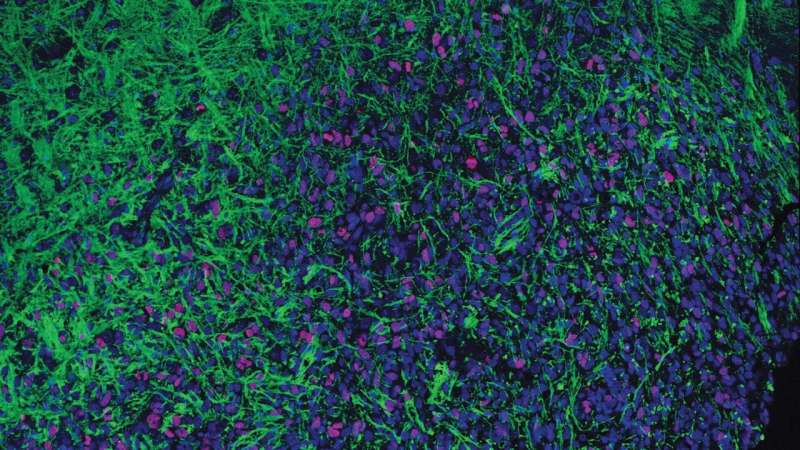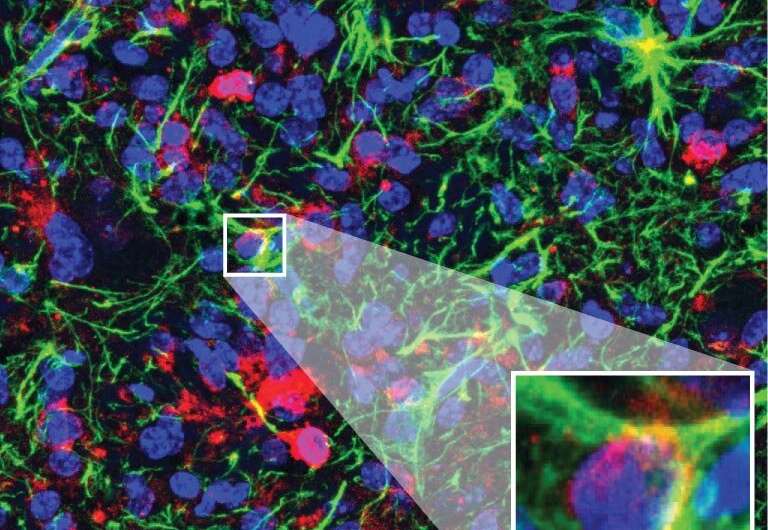This article has been reviewed according to Science X'seditorial processandpolicies.Editorshave highlighted the following attributes while ensuring the content's credibility:
fact-checked
peer-reviewed publication
trusted source
proofread
From tragedy, a new potential cancer treatment

Diffuse intrinsic pontine glioma (DIPG) is a lethal pediatric brain cancer that often kills within a year of diagnosis. Surgery is almost impossible because of the location of the tumors. Chemotherapy has debilitating side effects. New treatment options are desperately needed.
Cold Spring Harbor Laboratory Professor Adrian Krainer is best known for his groundbreaking research on antisense oligonucleotides (ASOs)—molecules that can control protein levels in cells. His efforts led toSpinraza, the first FDA-approved treatment for a deadly neurodegenerative disease calledspinal muscular atrophy(SMA).
Following his success with SMA, Krainer started looking intoother diseaseswhereASOs could make a difference. He soon set his sights on DIPG. "I was contacted by a neurologist and his friend, who had lost her child to DIPG," Krainer says. "They called to ask if what we did for SMA could be applied. Of course, every disease has its own barriers and obstacles, but it seemed doable. We thought it might be possible to develop a therapy."
Now, Krainer, graduate student Qian Zhang, and their colleagues have developed a potential therapeutic for DIPG using ASO technology similar to that in Spinraza. Thisnew therapyslowedtumor growth, reversed certain changes incancer cells, and increasedsurvival ratesin mice with DIPG.Krainer's SMA researchlaid the foundation for this work.

"While working on Spinraza, we learned how to deliver ASOs to the spinal cord and brain," he explains. "They have long-lasting effects there. So, we knew there was potential for treating other diseases."
The new ASO drug works by shutting down a mutated protein called H3.3K27M. In DIPG, the dominant mutation blocks closely related proteins from turning many genes on and off. This leads to uncontrolled cell growth—cancer. When the team used the ASO drug on mice with DIPG, the genes it affected returned to normal. The tumors stopped growing as fast, and the animals lived longer.
"After treatment, the cancer looked very different," says Krainer. "We could see a lot fewer proliferating cells, and the tumor cells were differentiating into healthy nerve cells. That tells us DIPG's malignant changes are reversible to an extent."
While hopeful, Krainer says there is still a long way to go before this new therapeutic can beginclinical trials. Additionally, thepotential drugwould likely need to be paired with another treatment like radiation or immunotherapy.
"Certainly, we would like this to make it toclinical studies," he says, "but we didn't put all our cards into one approach. We're exploring ways to make this even more effective."
The findings are published in the journalScience Translational Medicine.
更多的信息:Qian Zhang et al, Antisense oligonucleotide therapy for H3.3K27M diffuse midline glioma,Science Translational Medicine(2023).DOI: 10.1126/scitranslmed.add8280.www.science.org/doi/10.1126/scitranslmed.add8280




















